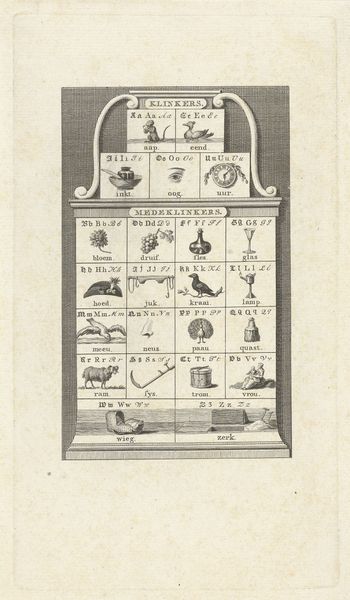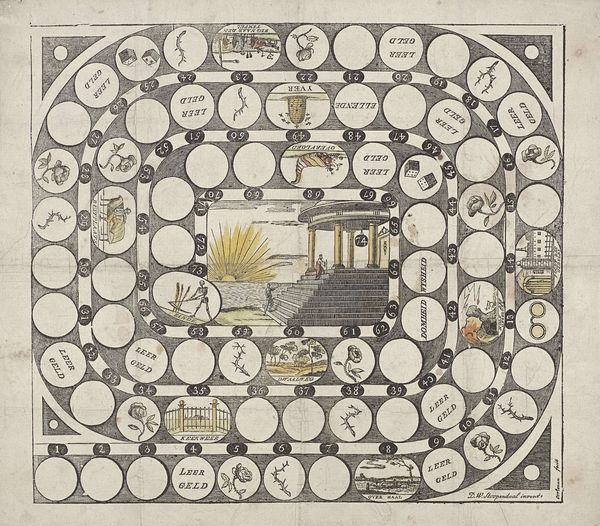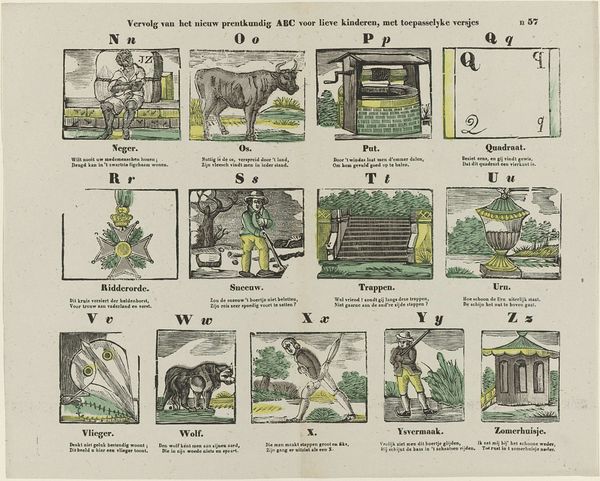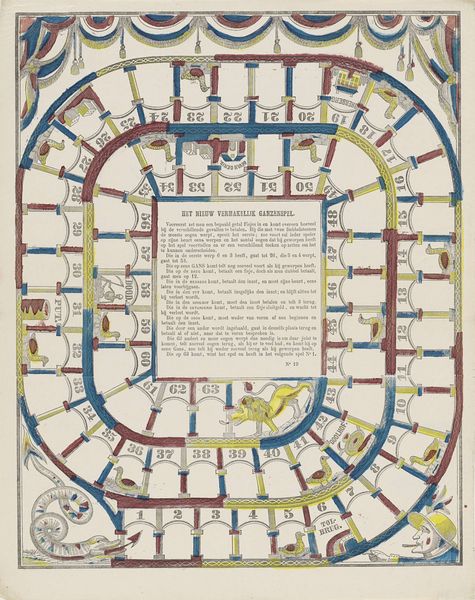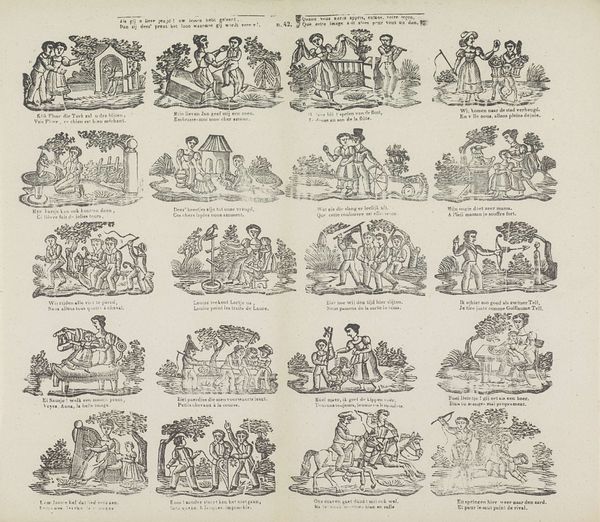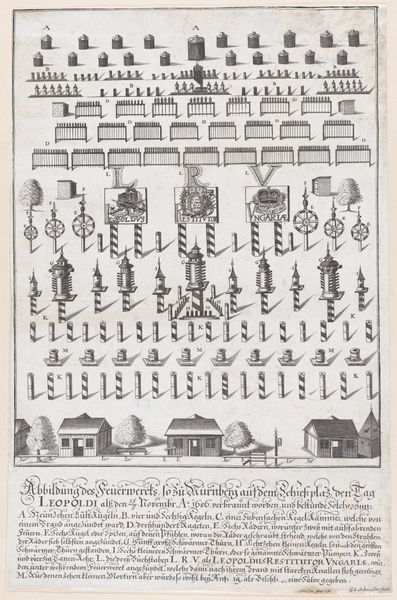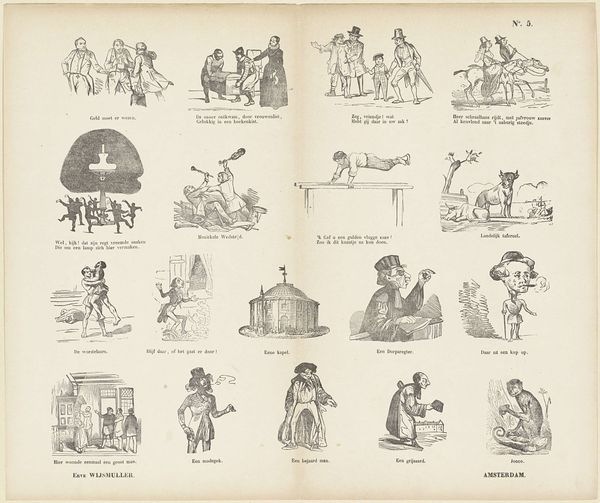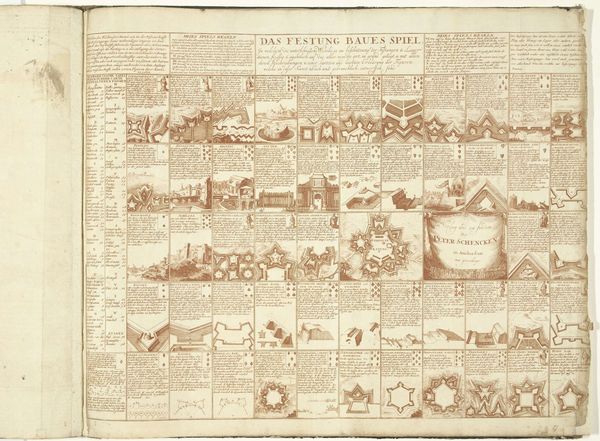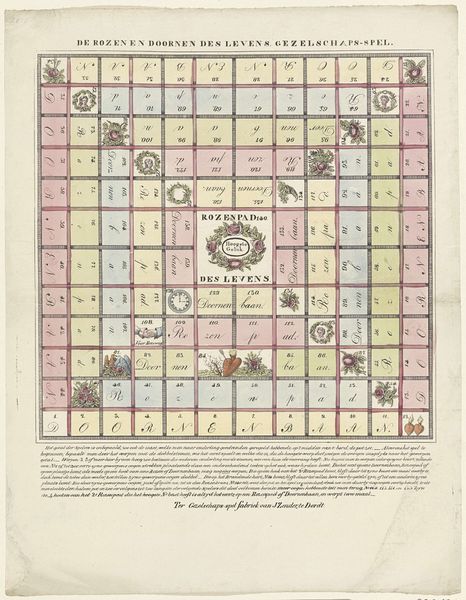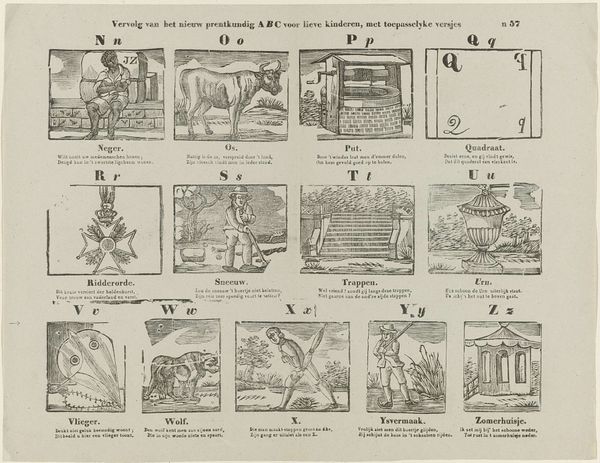
graphic-art, print, engraving
#
graphic-art
#
narrative-art
# print
#
genre-painting
#
engraving
Dimensions: height 535 mm, width 448 mm
Copyright: Rijks Museum: Open Domain
Curator: Jacob Coldewijn's "Laurens Koster spel," created in 1823, offers us a unique blend of graphic art, printmaking, and narrative storytelling, held at the Rijksmuseum. It’s structured like a board game, quite unlike any painting we've seen thus far. What strikes you most at first glance? Editor: The organization of the work! It is separated into many distinct cells. At first, the materiality looks so simple: lines and simple colours, but its the use of so many components with social messaging which adds depth and intricacy. How are we meant to process so many variables! Curator: Indeed. As an engraving, the reproduction of such intricate details suggests a move toward wider access and distribution. Think about the labor involved in creating this matrix, engraving these symbolic fields onto metal for countless prints. Each roll of the die represents a small piece of the printing economy in that time, a democratization of morals being spun out through chance. Editor: It’s tempting to see the “game” of Laurens Koster, the supposed inventor of printing, not merely as amusement, but as deeply intertwined with questions of cultural identity and moral conduct. Those snakes represent deceit, with honesty directly at the beginning, so the artist seems to lay the themes very thickly upon us! Curator: Yes, "Deceit" is a prevalent motif. How are concepts such as faithfulness or disloyalty manufactured and spread among people. It prompts the consideration of art as both a product and an economic vehicle during this period of social change. We cannot extract these ethical structures from their foundations of industrialization, each is built using the same cultural blocks as the other. Editor: Coldewijn is drawing attention to an important transition to printed text as mass commodity; these qualities come out very directly here as an object about the ethics involved in this industry and culture around printed materials and society. This almost acts as a didactic teaching aide of the printing practice as something fundamentally part of everyday interactions. Curator: An excellent point. The board acts as a space, representative of material society, to explore new understandings of societal development, printing, culture, ethics. It encourages us to appreciate the convergence of technique, social engagement, and perhaps even playful commentary. Editor: Ultimately, it invites us to delve deeper into how this board acts as a sort of didactic metaphor about society, culture and even morality itself during this exciting, chaotic period of production and change!
Comments
No comments
Be the first to comment and join the conversation on the ultimate creative platform.


